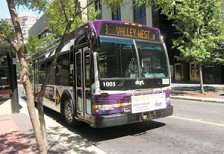Survey: Majority don’t utilize public transportation

.floatimg-left-hort { float:left; } .floatimg-left-caption-hort { float:left; margin-bottom:10px; width:300px; margin-right:10px; clear:left;} .floatimg-left-vert { float:left; margin-top:10px; margin-right:15px; width:200px;} .floatimg-left-caption-vert { float:left; margin-right:10px; margin-bottom:10px; font-size: 12px; width:200px;} .floatimg-right-hort { float:right; margin-top:10px; margin-left:10px; margin-bottom:10px; width: 300px;} .floatimg-right-caption-hort { float:left; margin-right:10px; margin-bottom:10px; width: 300px; font-size: 12px; } .floatimg-right-vert { float:right; margin-top:10px; margin-left:10px; margin-bottom:10px; width: 200px;} .floatimg-right-caption-vert { float:left; margin-right:10px; margin-bottom:10px; width: 200px; font-size: 12px; } .floatimgright-sidebar { float:right; margin-top:10px; margin-left:10px; margin-bottom:10px; width: 200px; border-top-style: double; border-top-color: black; border-bottom-style: double; border-bottom-color: black;} .floatimgright-sidebar p { line-height: 115%; text-indent: 10px; } .floatimgright-sidebar h4 { font-variant:small-caps; } .pullquote { float:right; margin-top:10px; margin-left:10px; margin-bottom:10px; width: 150px; background: url(http://www.dmbusinessdaily.com/DAILY/editorial/extras/closequote.gif) no-repeat bottom right !important ; line-height: 150%; font-size: 125%; border-top: 1px solid; border-bottom: 1px solid;} .floatvidleft { float:left; margin-bottom:10px; width:325px; margin-right:10px; clear:left;} .floatvidright { float:right; margin-bottom:10px; width:325px; margin-right:10px; clear:left;}
More than two-thirds of respondents to a recent survey said they don’t utilize public transportation in the Des Moines area.
The Des Moines Area Metropolitan Planning Organization (MPO) recently released the results of an online survey aimed at exploring Greater Des Moines residents’ use of public transportation. The MPO acts as the formal transportation body for the area and coordinates between state, public, local, state and federal agencies in regard to transportation planning issues, one of which includes reducing traffic congestion.
Of the respondents, 31.3 percent said they use public transportation, while 68.7 percent said they don’t utilize Des Moines’ options. Of the 31 percent of respondents who do employ public transportation, 54 percent ride it four to six days per week, 19 percent ride it two to three days per week, 19 percent ride it one day per week, and 9.5 percent ride it on a daily basis.
The two most common reasons respondents gave for using public transportation were “to reduce my environmental impact” (29.6 percent) and “to save money” (29.6 percent).
Not only do a majority of metro area residents not use public transportation, but according to a 2009 MPO vehicle occupancy survey, they don’t like to carpool either.
The MPO employed a roadside windshield survey to collect occupancy numbers in cars traveling past observation points along principal and minor arterial streets and highways. The survey found that during peak morning and evening hours, the average vehicle occupancy was 1.14 people. In fact, 86.6 percent of the more than 44,000 passenger cars only had one occupant, while 12.5 percent had two occupants and 0.9 percent had three or more occupants.
According to the findings, the 2009 average vehicle occupancy had decreased from previous years, and based upon a comparison with the 2001 National Household Travel Survey, it was inferred that fewer people shared rides to work in 2009.
An MPO analysis of Des Moines Area Regional Transit Authority (DART) ridership found more bad news for a city that is trying to reduce single-occupancy vehicle use. Although DART provided 3.4 million rides, overall local route ridership decreased 5.8 percent from 2008 to 2009 and express route ridership decreased 23.8 percent.
Lower fuel prices and unemployment were confirmed not be the reasons for the decrease on the local routes. However, express route riders tend to have a higher income and have a car available to use, making it easy for them to change from riding public transportation when gas prices decline.
Overall, 31.9 percent of respondents to the MPO survey were not satisfied with the public transportation services available in the area, but 51 percent were somewhat satisfied, and 17 percent said they were very satisfied.
Nationally, urban bus ridership decreased by nearly 4 percent in the first quarter of 2010 compared with the previous year’s quarter, according to a report by the American Public Transportation Association. However, cities with populations between 100,000 and 500,000 saw the least average decline, less than 1 percent. Cities with less than 100,000 residents actually averaged a 5.7 percent increase in ridership.
The No. 1 thing that the MPO survey respondents felt would help increase public transportation use? Improving frequency of service.
Respondents desire buses that run more often, later into the evening and to and from the suburbs. Other suggestions included more park-and-ride locations, offering incentives for first-time riders, and expanded marketing and education efforts.
Several respondents also proposed adding light rail to the western suburbs and between Ames and Des Moines.








